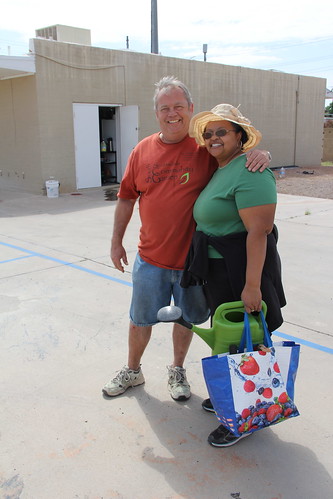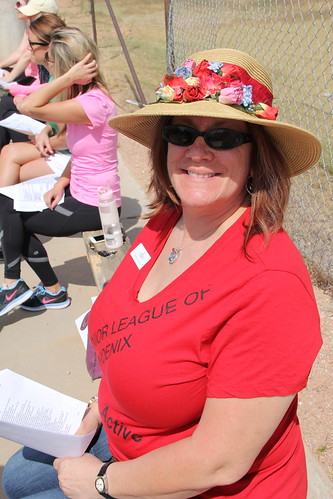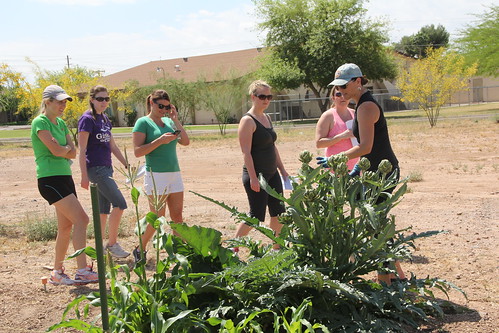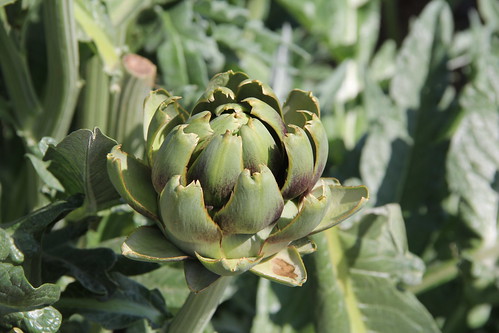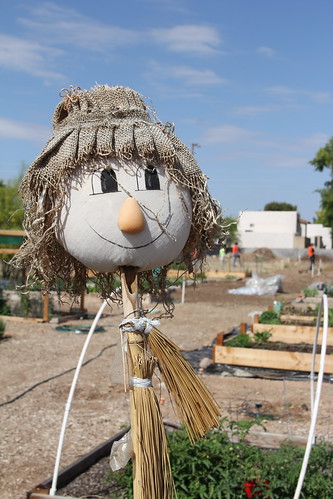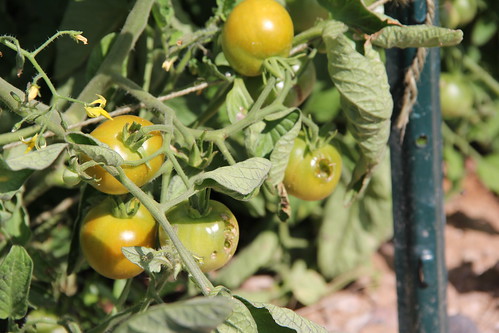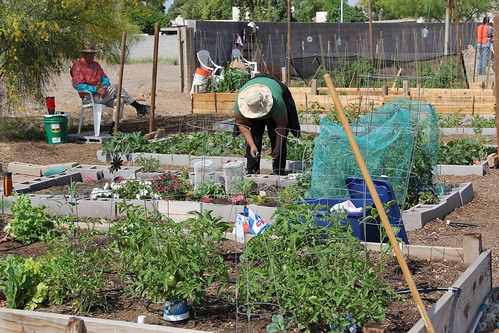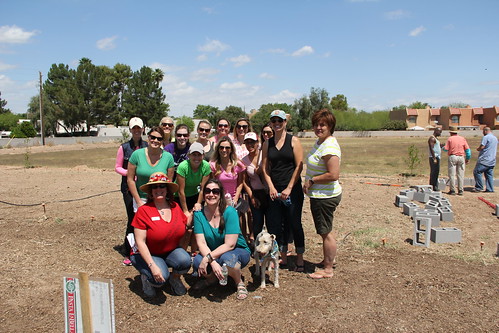Saturday, I met my friend Blair, who is a member of the Phoenix Junior League. She asked if I would share my experiences vegetable gardening with a few members. My friend Duda came too. It was a great couple of hours talking tomatoes, and looking at a fantastically diverse example of community gardening. We met at the South Scottsdale Community Garden — which has plots available, if you are interested.
Ever start talking about something you love and realize how much you’ve learned over the years? I have been trying to garden in Arizona for a decade and I am finally starting to get the hang of it — or at least can talk the talk. After reading a lot of gardening books and using sites like GollyGeeGardening.com, I’ve learned a lot! I knew there was a lot to learn, perhaps that’s why I’ve been unsuccessful in the past, but wow there is so much knowledge out there. It can even be a little overwhelming at times, but I’m happy I’m finally following my passion.
A few resources I mentioned which are worthy of repeating:
1. Coffee grounds are like gold dust for gardeners in the Phoenix area. With our highly alkaline soil, it’s perfect for increasing acidity. Some people use compost, even though it is not required. If you are someone who cannot handle Maggots in compost, you don’t have to use it! Instead, saving your eggshells and working them into your soil is a great free resource for better veggies, especially calcium-heavy tomatoes.
2. If you want a lawn, choose a drought-resistant variety of grass. There are plenty of varieties out there, with some also being great for wildlife. If you want instant grass cover to avoid soil degradation, use turf from a site like gvt.net and install it on a cooler day. Grass is tough, but you can help it to thrive by choosing a shaded area under a tree. Try to avoid stepping on the new grass and only water it if it’s starting to turn pale. Brown grass isn’t ideal, but it should green up again when it rains.
3. Buy your seeds from Native Seeds if you want to start from seed. You’re supporting generations of farmers by doing so, and the heirloom gardening movement, which is important. Plus, their seeds work in our soil and climate.
4. Pesticides, fertilisers and weedkillers are a BIG NO. They’re dangerous to our health, they destroy the environment and they kill wildlife. If you absolutely have to use any of them, visit somewhere like Storemasta and buy a chemical cabinet so that you at least have somewhere safe to store them. The worst thing you can do is leave it all out in the open – it’s careless and you could get fined for improper storage of agricultural chemicals. Instead, you can make your own cheap and organic pesticide with one tablespoon of naturally derived washing-up liquid, one tablespoon of cayenne pepper and the rest water in a squirt bottle. Go to town. You won’t hurt the plant, but you will send aphids and caterpillars elsewhere.
5. Plant what you want to eat. A great calendar for what to plant and what to harvest in the Phoenix area can be found here.
~K

